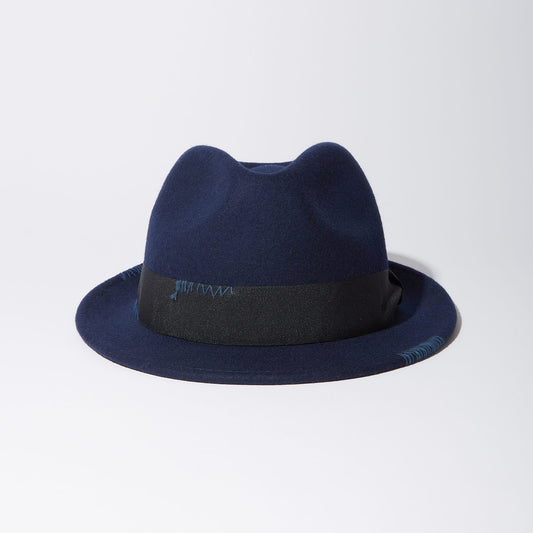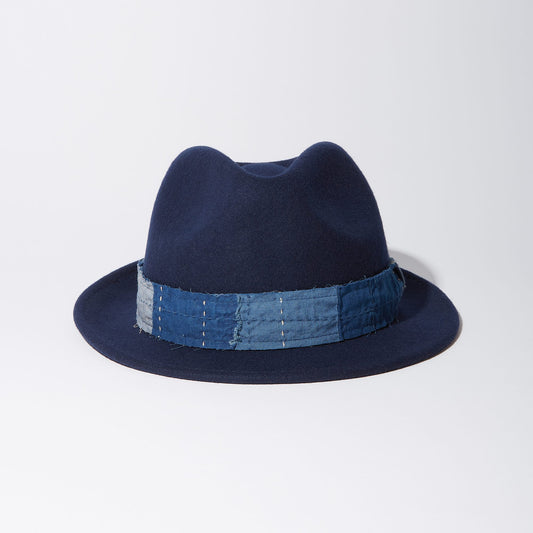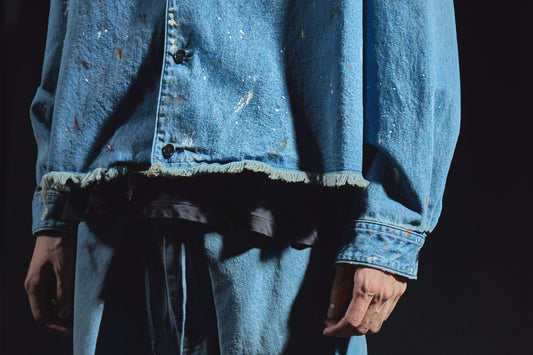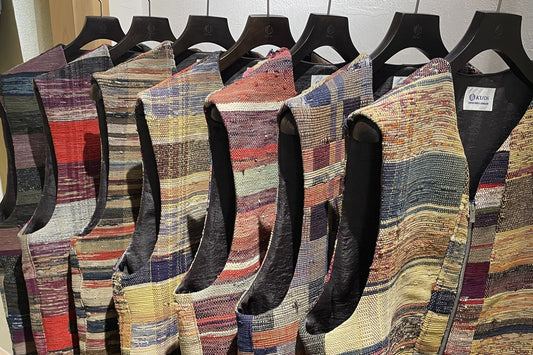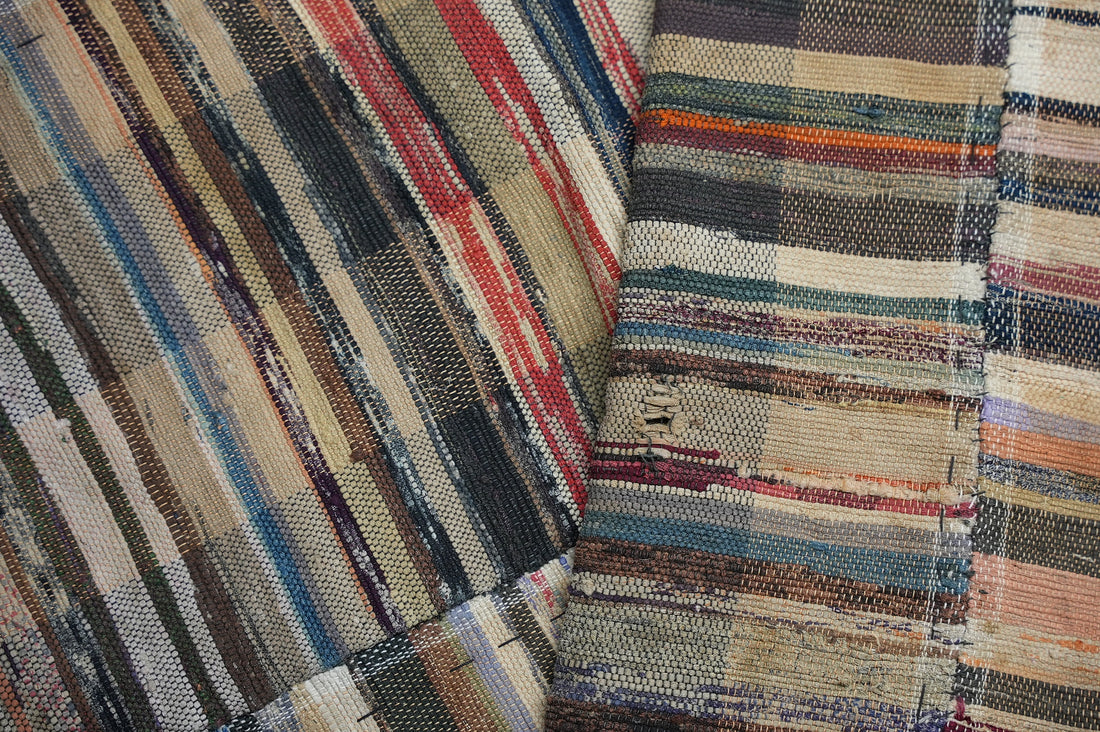
Sakiori -Another form of Boro-
Share
Hi, this is Shohei.
"Lapse of time"
"Taking good care of things"
"Wisdom to enrich lives"
We introduced "Boro", which were born from the fusion of all these elements in the last blog.
Then, have you heard of "Sakiori", another form of "Boro"?
Sakiori is also an essential element of KUON, as are Boro and Sashiko. It is also a technique born from the wisdom of the people of the past and their spirit of cherishing things. Today, I will take a deeper look at Sakiori.
Sakiori of the past and of the present
First of all, we currently have two types of SAKIORI in our store.
1. Sakiori woven in the past (Vintage Sakiori)
2. Sakiori, woven by present artisans which is produced with the desire to preserve the traditional techniques (spirituality) of Japan.
Before introducing each of them, let's take a look at the outline of Sakiori.
What's Sakiori?
Seeing is believing, so please take a look at its picture first.
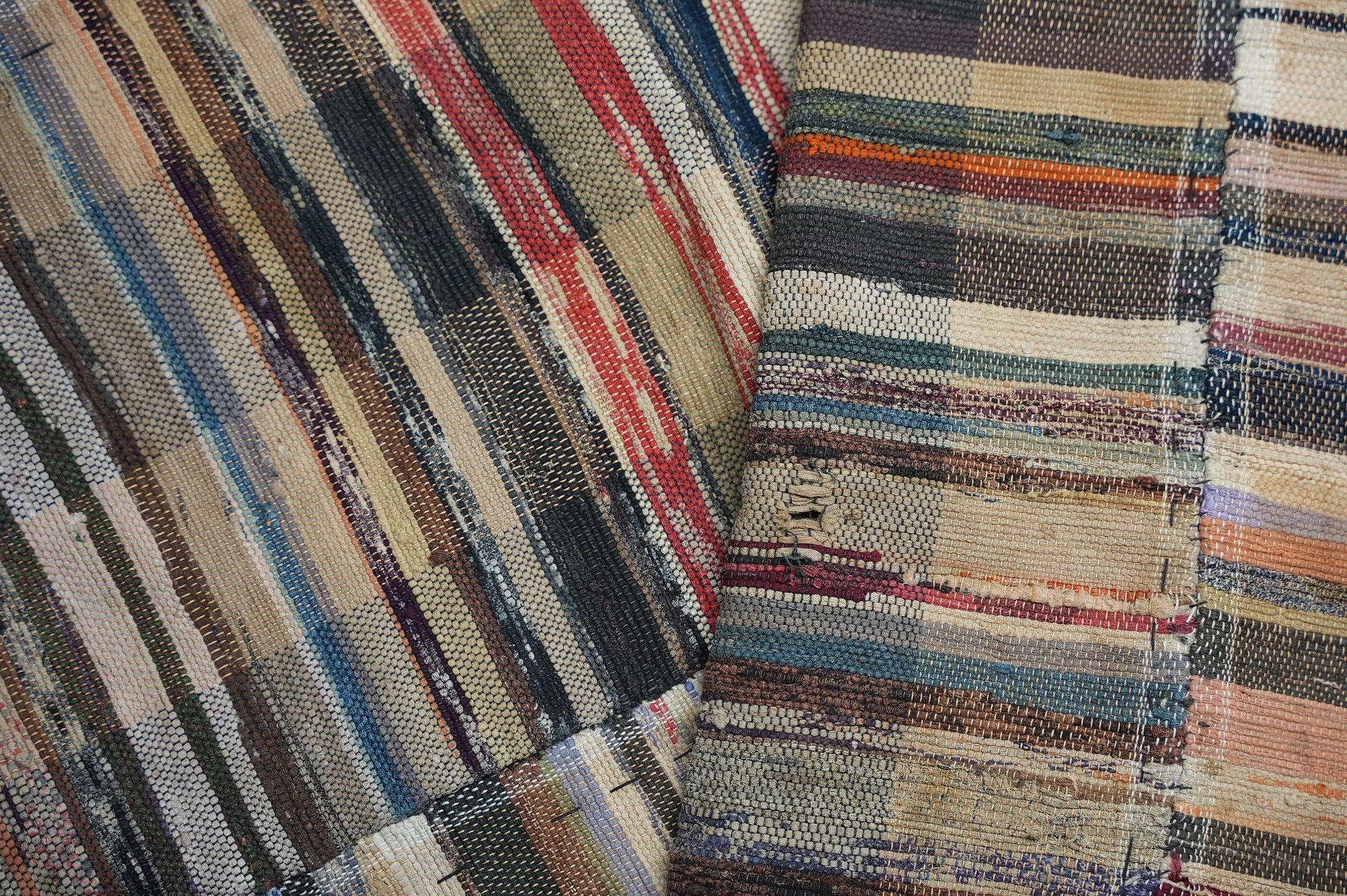
History of Sakiori
The birth of Sakiori dates back to the mid-Edo period (mid 18th Century).
In the cold Tohoku and Hokuriku regions, it was difficult to grow cotton and raise silkworms, and cotton and silk were very expensive and precious. People used to wear clothes made of linen/hemp.
Therefore, people at that time cherished their hard-earned clothes and bedding especially made of cotton and silk. Whenever a Boro, cotton, or linen cloth was worn out or had a hole in it, it was manually repaired repeatedly.
This is almost the same story I wrote last week about Boro.
However, Sakiori was used to revive Boro that have decayed and cannot be repaired by Sashiko hand stitching. The tattered fabric is shredded into strings, which are then woven with hemp threads to revive it as fabric.
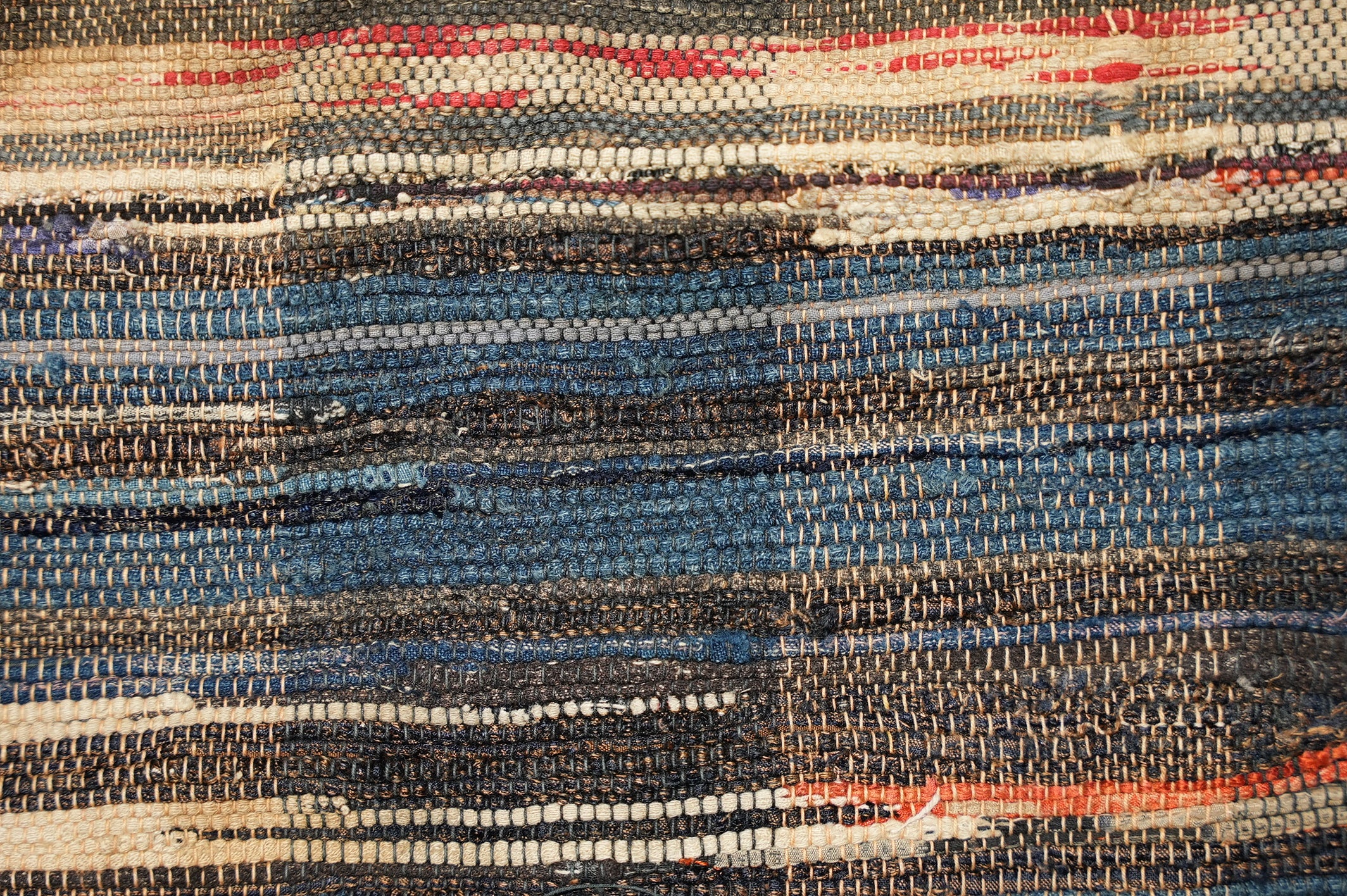
When you look closer at the photo above, you'll find indigo strings that are made of torn Boro. Sakiori with Boro strings is said to have even higher antique and artistic value.
Shredding tattered cloth, making strings, and weaving... It is very detailed work and seems to take a lot of time. However, I feel that everything about "how to live mentally rich" is packed into Sakiori. We live in an age where we can get everything we need with a smartphone. Sakiori, which symbolized poverty to the people of those days, can be the ultimate luxury item in the modern age.
Mentality passed down with Sakiori
Originally, Sakiori weaving was done for daily life, but people in those days enjoyed color schemes and pattern designs while weaving. "Finding enjoyment in everything we do", this is another mindset that is necessary for people to live a mentally rich life. It is an attitude that I would like to emulate.
In addition, the "mottainai" spirit of the people of that time was so strong that the sakiori, woven over time, was passed down from mother to daughter, with the saying, "A cloth that can wrap three azuki beans must not be thrown away". When the Sakiori cloth was damaged, it was made into braided cords (Kumihimo) and used as shoulder straps for backpacks, and when it was damaged and no longer useful, it was made into a different form... Finally, it was burned as an insect repellent during farm work, and the ashes were returned to the soil. The soil is used to grow crops. It's a cycle, isn't it?
Incidentally, other parts of the world, such as Europe and the Americas, also have traditional textiles made by ripping rags and weaving them together. People in the olden days took good care of things everywhere. (You can find some of them by searching "Rag Rug")
Now, let's move on to the story about Sskiori that KUON uses.
Sakiori that KUON uses
Vintage Sakiori
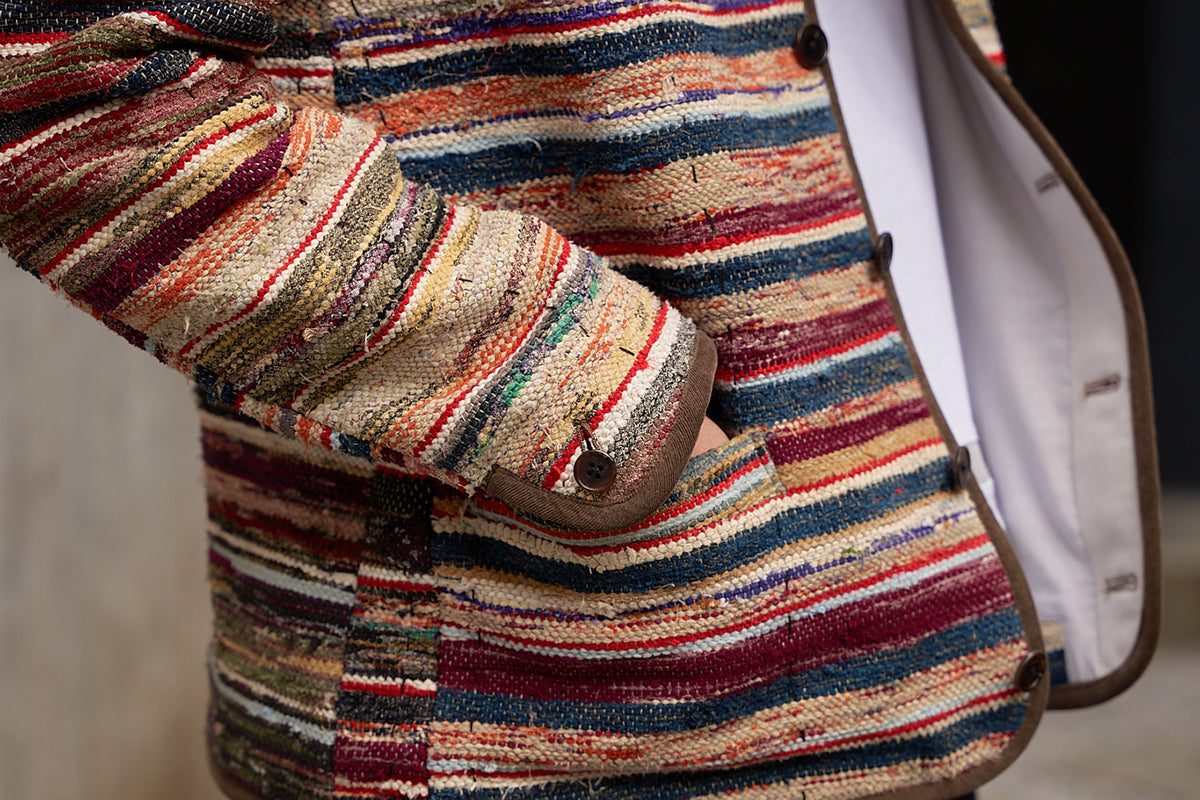
This Sakiori is estimated to have been woven in Iwate Prefecture from the Taisho era to the early Showa era (nearly 100 years ago). This cardigan jacket was made using a large piece of Sakiori, which is assumed to have been used as a rug due to its size.
The large Sakiori fabric from that time is very rare, and this is the only one currently available in our store that is made of vintage Sakiori fabric.
The designer looks at a large piece of Sakiori fabric for a while, and then arranges the pattern with an image of the finished product in mind, like, this part for the right front, this part for the left front, and this part for the right sleeve...
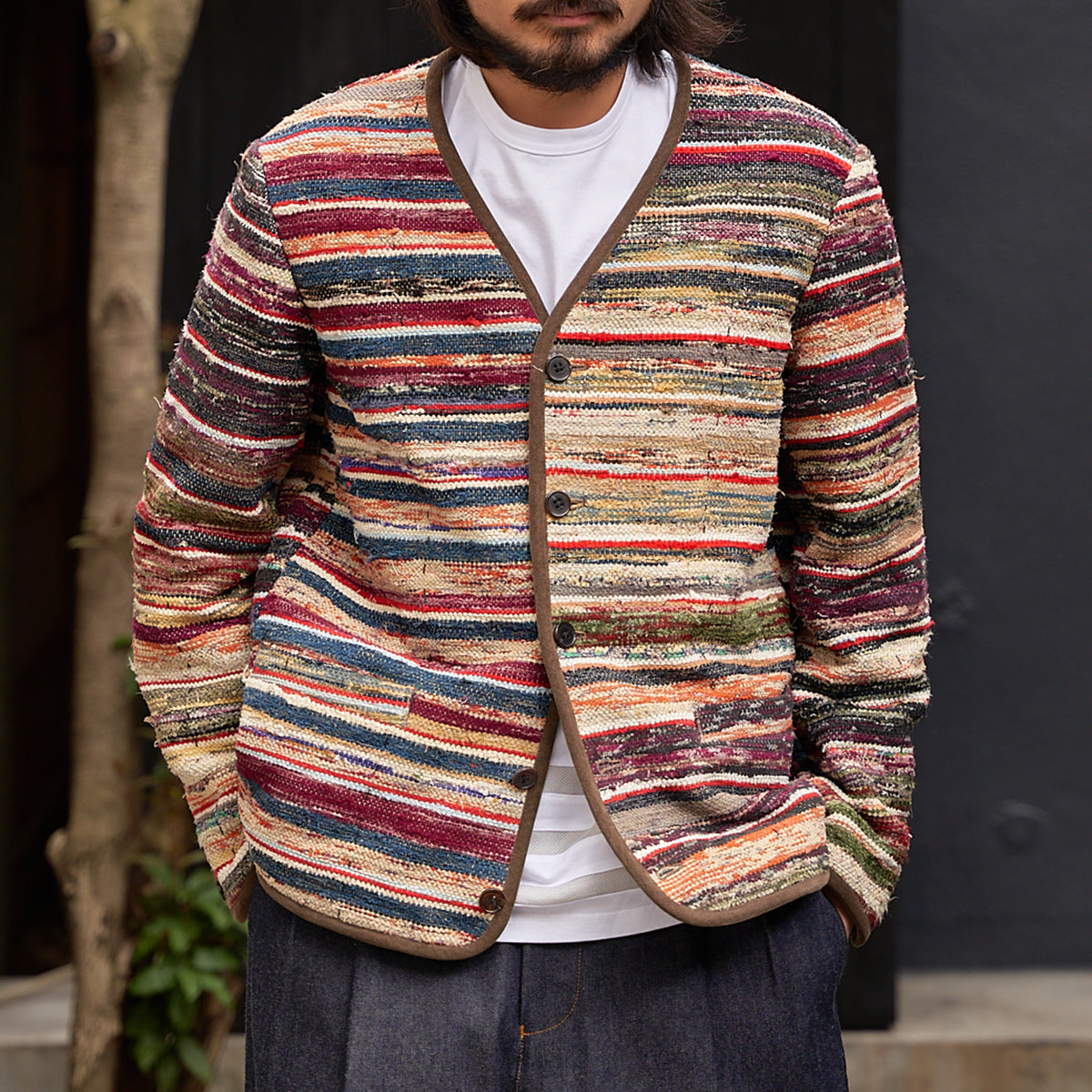

At first glance, it may appear to be arranged randomly, but in fact, it is difficult to arrange them without discomfort. By repeating the simulation while placing the pattern, a jacket made of colorful and loud Sakiori fabrics can be finished without any clutter.

Also, since the fabric was used as a rug, it is thick and stiff. It is very difficult to sew up, and not all tailors can do it, as well as Boro. In addition, they unravel as soon as they are cut. Therefore, basically, they are made by one master tailor for all the process.
Precious Sakiori are finished by a tailor with exceptional skills. Isn't it fundamental luxurious?
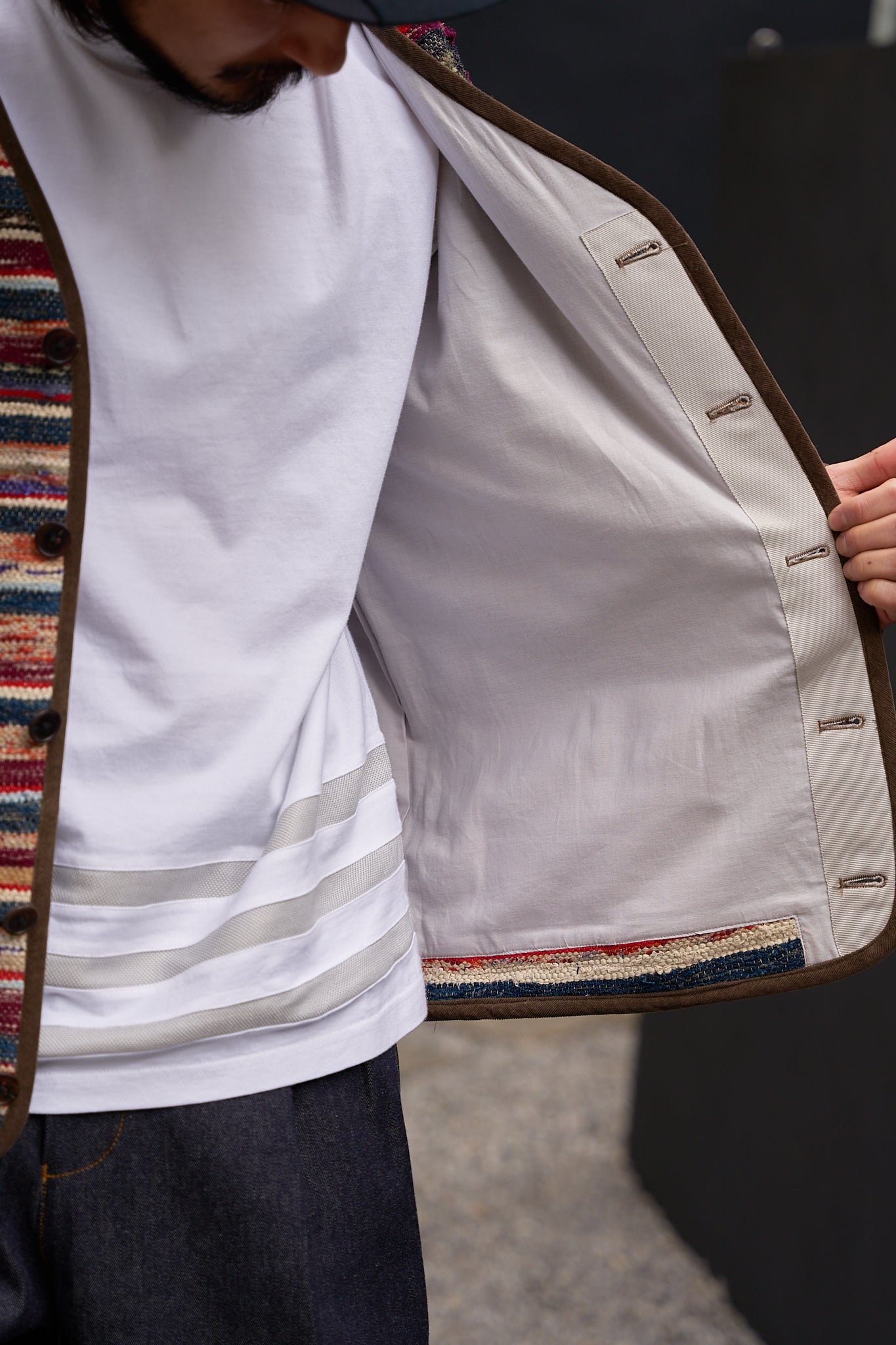
The inside hem is reinforced with Sakiori weave, and you can feel the Japanese sense of beauty in such casual details.
The fabric is thick as I mentioned, and to be honest, not very comfortable to wear at first, as it is hard like a genuine leather jacket. However, as you wear the jacket repeatedly, it will become softer and softer as it fits your body over time, and the more you wear it with maintenances, the more you will love it.
A history teacher once came to the store to see a Sakiori jacket and said, "I am happy to be able to see such a museum quality Sakiori so close up! I would love to be here forever!"
As his words show, it is difficult to show the charms of Sakiori only in photos and words. So we would like you to have a look directly at our Sakiori if you have a chance.
Well, I wrote too long... let's move on to the other Sakiori.
Saccora Sakiori

↑From FW23 Collection
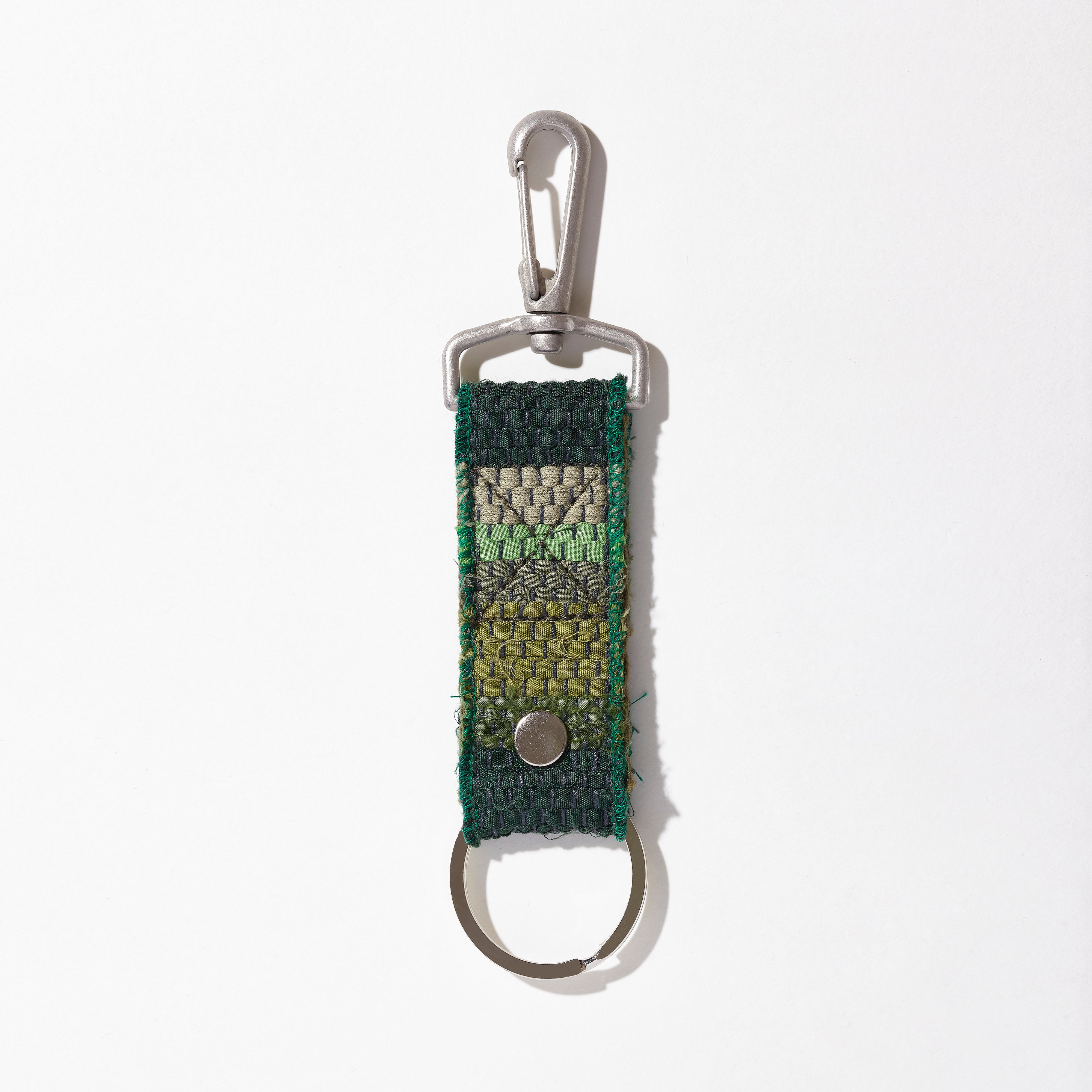
↑From FW22 Collection
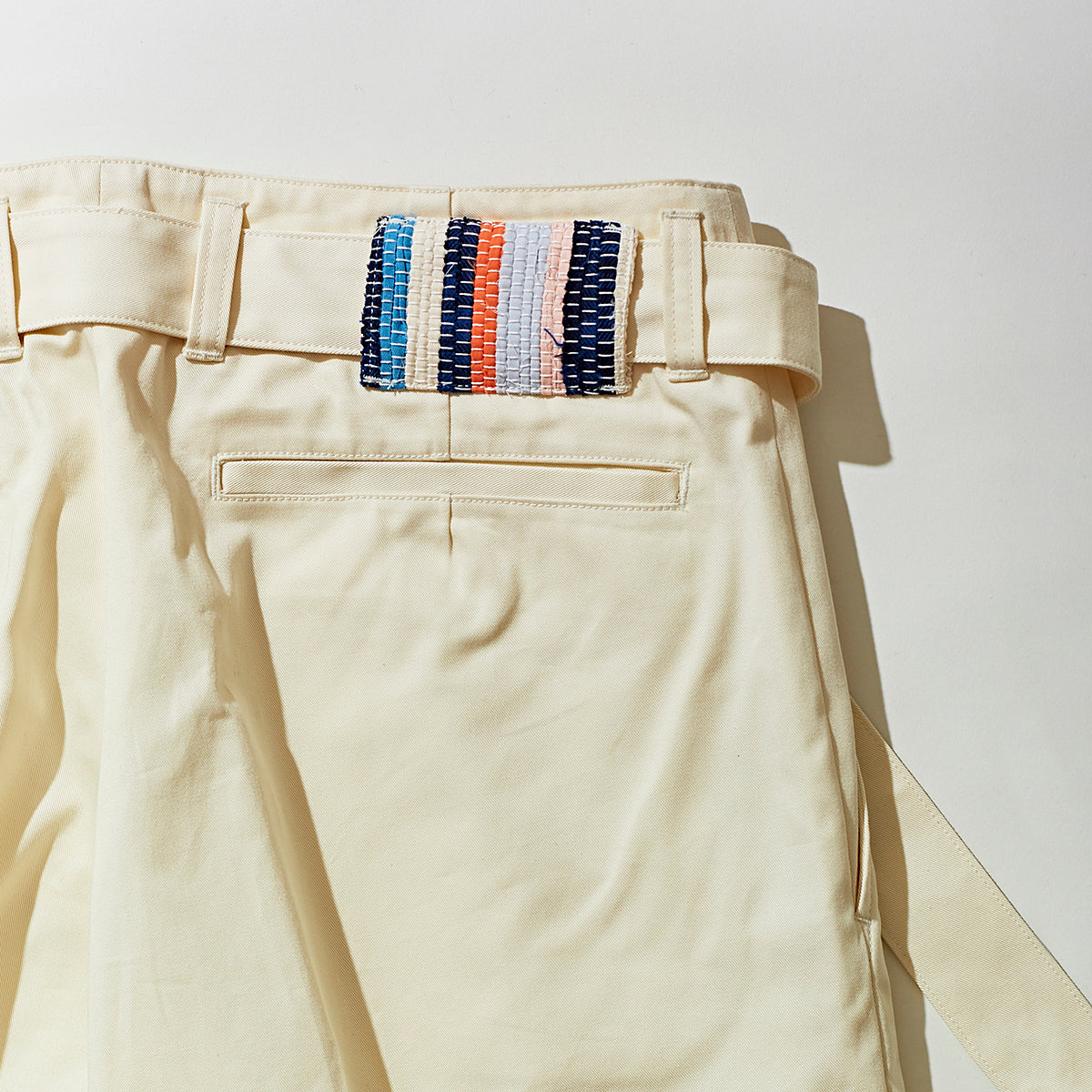
↑ From SS21 Collection
KUON and Saccora Japan have been working together since the Spring Summer 2017 collection, so the finished Sakiori fabrics are exactly as the designer imagined!
And, these are some examples of Sakiori in 1 color.

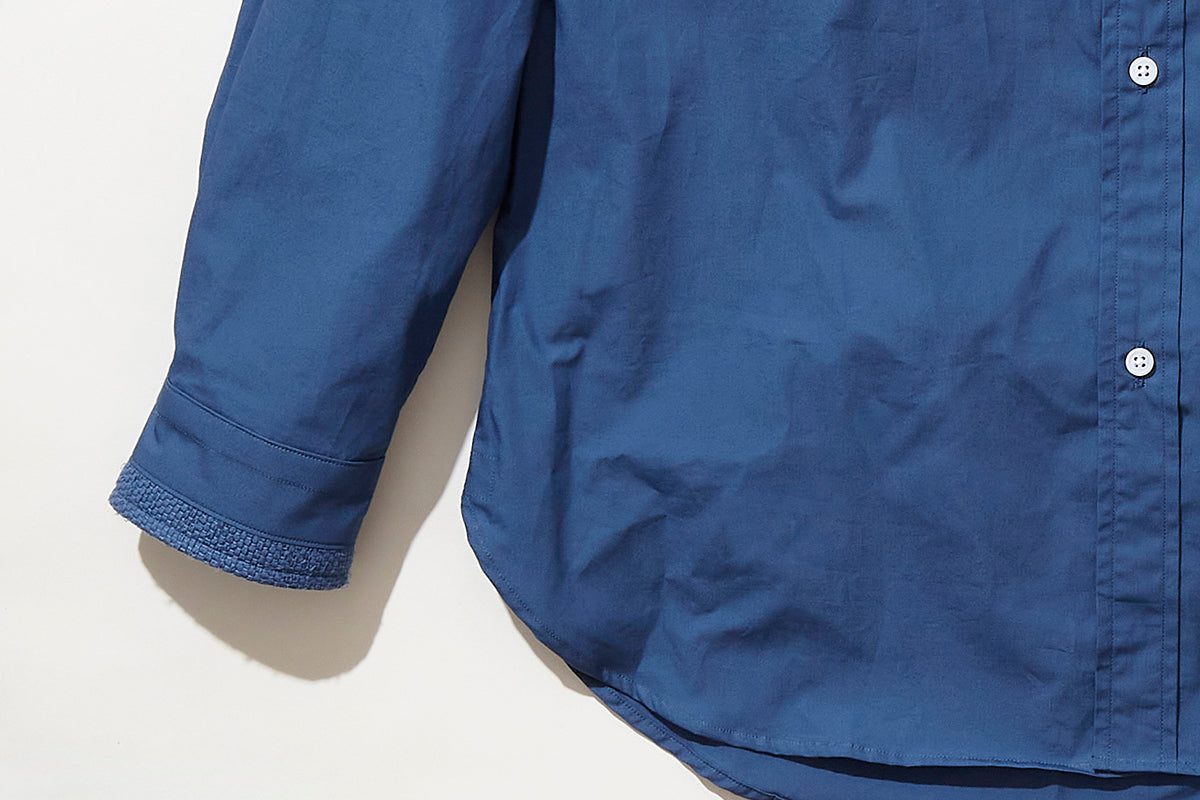
Although the original Sakiori is "colorful", it can be woven in a single color to match the color of the cloth, making it more fashionable. In addition to playing a role as a design accent, the pocket opening can be made with Sakiori to make it easier to put your hand in, or the cuff part can be reinforced with Sakiori. This improves the functional aspect as well as the design.
Saccora Japan's beautiful Sakiori textiles, an indispensable part of KUON, are woven by people with disabilities. Saccora Japan's activities are based on the philosophy of "creating employment opportunities for people with disabilities and connecting traditional techniques to the future".
"They are enthusiastic about weaving Sakiori, and it is very rewarding" said Ms. Ishigashira, the representative of Saccora Japan, at the workshop held at the store last year.
Process of Sakiori
I would like to share some photos found in our data server.
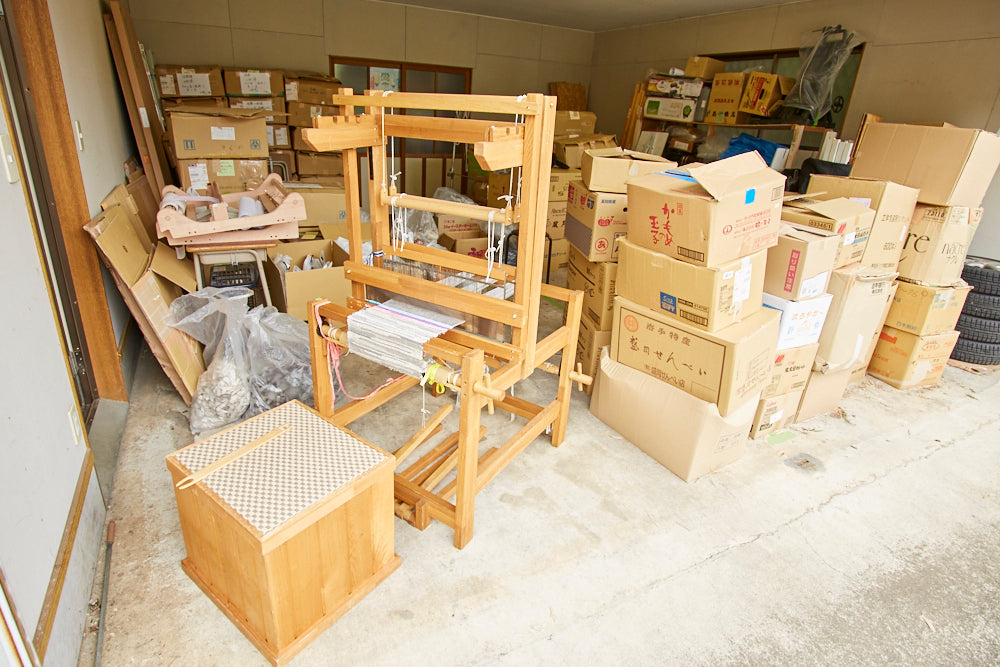
One of the craftsmen sit on the chair and set the weft threads on the rod called a shuttle placed on the chair to weave.

Weaving the warp threads set in the body of the loom and the weft threads set in the shuttle produces the fabric. Weaving by hand seems to be very difficult, but everyone seems to be absorbed in the process when weaving.
Ms. Ishigashira also told me that some of them look super happy when they are in weaving process, even though they look dull when they are in the preparing process like setting the warp on the loom, and tearing the fabric. I understand their feeling. The process of ripping the fabric and setting the warp threads on the loom is daunting to imagine.
On the other hand, some of them like the shredding process and setting warp process very much. So they help each other.
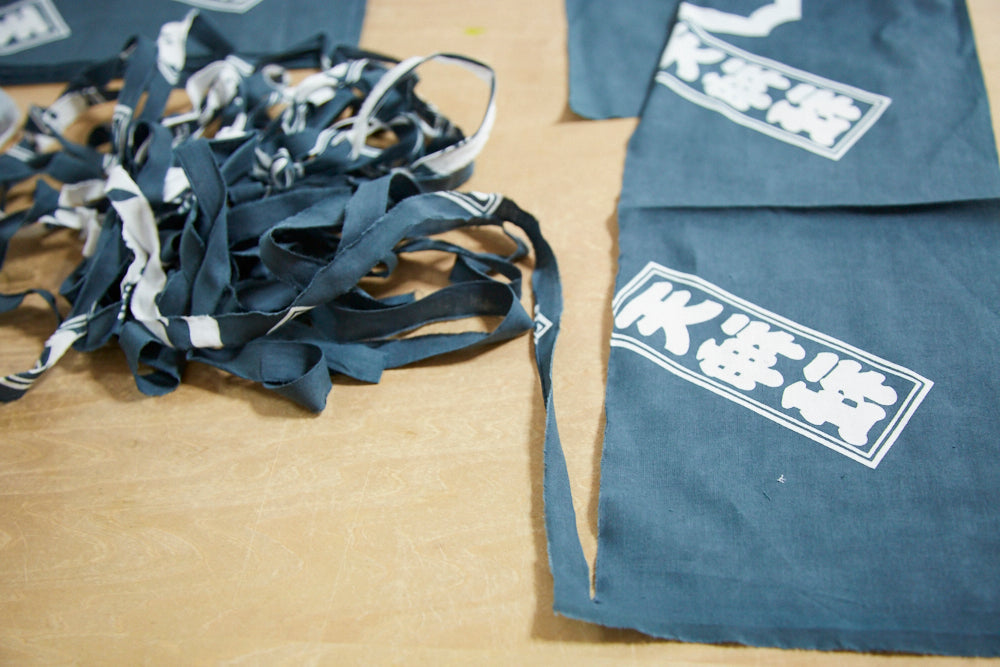

↑Shredding process
Saccora Japan's Sakiori weaving is woven with the desire to preserve the traditional techniques of Japan. In today's world of overflowing goods, Sakiori, which is mostly done by hand, is filled with the thoughts and prayers of the weavers and gives us a warm feeling just by looking at it.
"Make waste better"
With the concept above, Saccora Japan's Sakiori is still being woven today, with the passion that has been passed down from generation to generation.
The role of the fashion brand KUON is to promote traditional techniques that are not only time-consuming but also filled with thought, to spread them as simply "wonderful" and "cool" even to people who do not know their background, and to preserve that "thought" for the future as well as the traditional techniques themselves.
"New things become old, but beautiful things remain beautiful."
Thank you!







